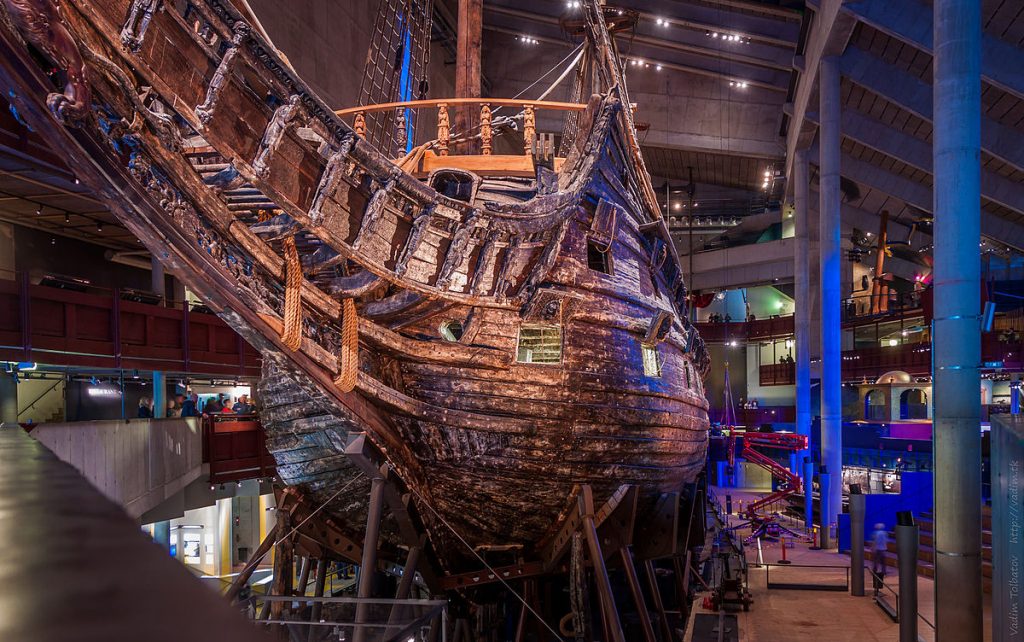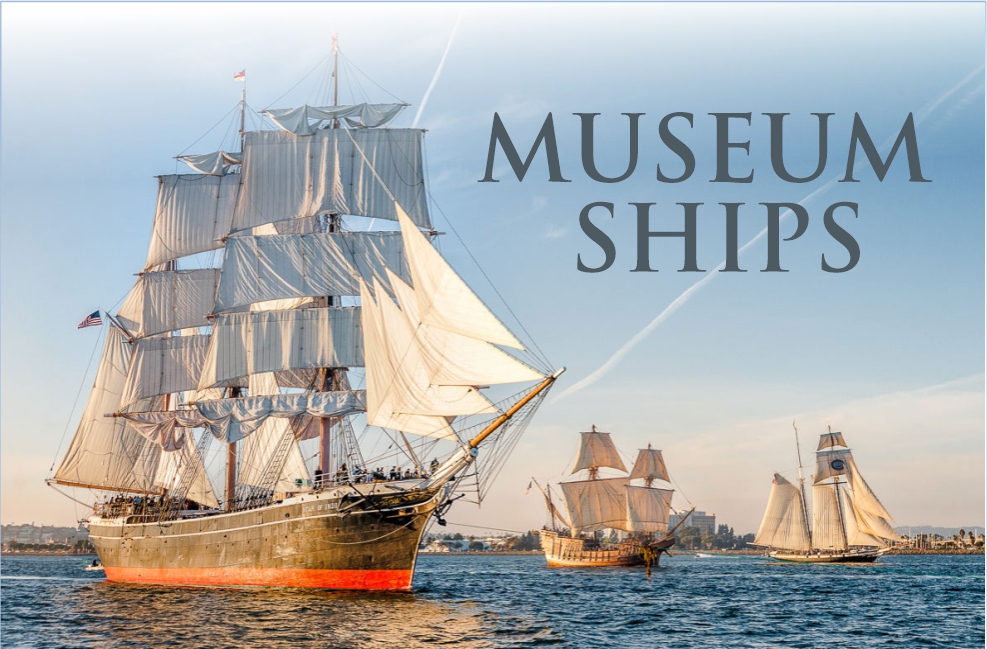A museum ship, also known as a memorial ship, is an old ship that has been maintained and turned into a public museum for educational or commemorative purposes. Some are also used for recruiting and training, primarily for the small number of museum ships that are still operating and so capable of frequent mobility.
Hundreds of museum ships are preserved across the world, with roughly 175 of them belonging to the Historic Naval Ships Association. However, many of them are not naval museum ships, they range from ordinary commercial ships to tugs and lightships. A marine museum is connected to many museum ships.
Due to the enormous expense of preserving ships against the ravages of the weather, few ships are kept beyond their useful lives. The majority are broken up and sold for scrap. A small number are demolished by sinking for naval target practice, scuttling to build artificial reefs, and other similar activities. Some have survived because of historical significance, while most have survived due to chance and fate. Due to the fact that an old ship left at dockside without attention will eventually rot and sink, it has become common practice in recent years to form a preservation society, solicit donations from governments or private individuals, organize volunteer labor from enthusiasts, and open the restored ship to visitors, usually for a fee.
The repair and upkeep of museum ships pose challenges for historians who are consulted, and the results are often contentious. The rigging plan for sailing ships, for example, has nearly never survived and must be recreated from multiple sources. Historians may learn about life onboard and how the ships operated by studying the ships. Several scholarly publications on ship repair and maintenance have been published, and worldwide conferences are conducted to examine the newest discoveries. The Barcelona Charter, ratified by a number of worldwide traditional vessel owner associations a few years ago, establishes basic minimum standards for the preservation and operation of traditional watercraft still in use.
Another factor to consider is the difference between a “genuine” museum ship and a replica ship. The absence of ancient components or even “suitable” work tools may lead to the employment of modern “short-cuts” such as welding a metal plate instead of riveting it, as would be the case during the ships’ historical period. Visitors with little prior knowledge of history are sometimes unable to discern between a historically significant museum ship and a more-or-less historically accurate ship replica that may just function as a tourist attraction.

The visitor normally enters through a pirate ship or a gangplank, wanders around on the deck, and then descends via the old stairways, giving them an idea of how the crew moved around. The interior includes rebuilt but inactive machinery, as well as souvenirs such as vintage pictures, explanatory displays, pages from the ship’s records, menus, and other memories. To improve the experience, some add recorded sound effects, audio tours, or video displays.
In rare situations, the ship’s radio room has been reopened, with amateur radio equipment operated by volunteers. The assigned callsign is typically a variant of the ship’s original identity. For instance, the submarine USS Cobia, previously known as NBQV, is now known as NB9QV. The USS Pampanito, a World War II submarine berthed in the San Francisco Maritime National Historical Park, was known as NJVT during the war and is currently known as NJ6VT. A unique call (in this example, KH6BB) is employed in other circumstances, such as the USS Missouri. This radio work aids in the restoration of a section of the ship and offers international exposure for the museum ship.
A few of the more elegant museum ships have begun to accommodate weddings, meetings, other events, and sleepovers, as well as cruises on those that are still seaworthy. In the United States, this involves the yearly “turnaround” of the USS Constitution, when the ancient ship is pulled out into the port and turned in the opposite direction to weather evenly. A spot on the deck is highly coveted and only available via invitation or lottery.
Many people believe that having an attractive historic ship on the local waterfront has enough tourism attraction that each port city should have one or more museum ships. This may even entail the costly construction of a replica ship.
To be concluded.






